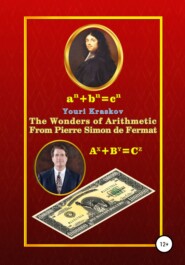
Полная версия:
The Wonders of Arithmetic from Pierre Simon de Fermat
Despite the fact that with his proof of the “Basic Theorem of Algebra” Gauss supported Euler in promoting his idea of using “complex numbers”, he did not find any other opportunities for progress in this direction. And what Euler showed, he was also not impressed. Moreover, even modern science at all can nothing offer anything on the use of “complex numbers”. But the sea of all kinds of “scientific” works, studies and textbooks on this theme is clearly inadequate with its true value. Gauss felt that something was amiss with these “numbers” and that it would not end well, therefore in that direction he did not work.

Pic. 24. Ernst Kummer
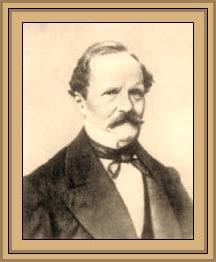
Thunder struck in 1847 when at a meeting of members of the French Academy of Sciences Gabriel Lame and Augustin Cauchy reported that their FLT proofs was ready for consideration at the competition. However, when in order to identify the winner, it was already possible to open received from them the sealed envelopes, the German mathematician Ernst Kummer having put all scientists on the sinful earth. In his letter it was reported that the FLT proof on the basis of “complex numbers” is impossible due to the ambiguity of their decomposition into prime factors.17
Here you have got what you want! These very “complex numbers” are not any numbers!!! And one could notice finally, after arithmetic was knocked from under science, it hangs in the air having no solid foundation. And the mistakes of the greats in their consequences are also extreme and they begin to break down a science so much that, instead of a holistic system of knowledge, it creates a bunch of unrelated fragments.
If it so happened, then else in 1847, these very “Complex numbers” had to be solemnly buried with all the honors. But with this matter somehow did not work out at all and the restless souls of the long-dead theories turn out to be so tenacious that they cannot be expelled from textbooks and professorial lectures by any means. They will wander through different books and reference books whose authors will be completely unaware of how much their works depreciates from this useless ballast.
In the mentioned book of Singh is well shown as the ambiguity of decomposing compound integers into prime factors makes it impossible to construct logical conclusions in proofs and it also was said that the unambiguity theorem for such a decomposing for natural numbers was given in “Euclidean Elements”. The specific book and location of the theorem is not specified; therefore, it is rather difficult to find the necessary text, but it really turned out to be so.18
“Euclidean Elements" is a very old book with archaic terminology, in which this extremely important for science theorem was somehow lost and it was simply forgotten about it. The first to discover the loss was Gauss. He formulated it again and gave proof, which contained a surprisingly simple and even childish error, where as an argument used exactly what needs to be proven (see pt. 3.3.1).
But this is not an ordinary theorem, all science holds on it! And what about Euclid? Oh my God! In fact, his proof is the same as that of Gauss i.e. wrong!!! Tell it to someone, so they will not believe! Three giants of science are stumbled on the same place!
Pic. 25. Euclid
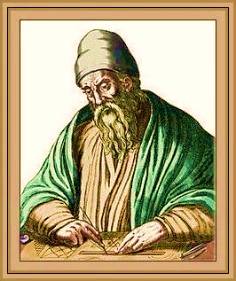
Then it turns out that this whole science is fake and now, thanks to Singh’s book and despite all the good intentions of its author, this terrifying FLT, which now even in theory has become completely unprovable, was so furious that like a true monster, in one fell swoop have devalued all the age-old works of scientists! And yet they live in not fabulous, but in the real kingdom of crooked mirrors, what about they themselves don’t know anything.
The fiasco being by academicians Cauchy and Lame did not result in the rejection use of the surrogates of numbers in science especially after Kummer who had crushed their works, found a way to prove FLT (with a little modernization) for any particular case. Before the final victory over the FLT only a last step remained – to obtain a single common proof. Since then 170 years have passed, but nothing was changed. Supported in due time by the Euler's genius "complex numbers" are still presented today as a kind of extension the notion of number. This looks very impressive and solid, but still requires a clear definition of the very notion of number, however just with this deal are very bad.
Students intuitively feeling that they are being tortured in vain by nonsenses about some non-existent numbers, suddenly have a question: “What is a number?” They never come to mind that not a single professor could not answer this question even if he has reread everything that is in mathematics. One of them even could not bear the mocking hints and had published a whole book called “What is a number?” [13, 29]. In it, he has written so many whatnots that students have very well understood – such a question it’s better not to ask.
Pic. 26. Francis Viète
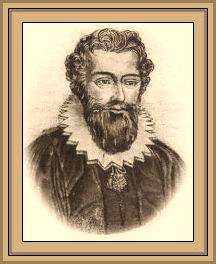
Meanwhile, scientists continued to move science forward, not bothering with such trifles as the essence of the notion of number. So, they created a whole bunch of new algebras taking advantage of the fact that there were no obstacles along the way. But they were not a continuation of what was a real one, the founder of which was the first royal mathematician François Viète served as an advisor to the court of the French king Henry III. But if these new algebras are special, then their terminology and bases are also special.
So, little by little in the science began to form a particular bird language understandable only to the authors of these most innovative developments. It even reached the point where mathematical societies creating a science only for themselves began to appear and in addition to this, the newest numbers appeared out of nothing: “hypercomplex”, “quaternions”, “octonions” etc. But the impression from the new achievements sometimes was spoiled from the same mare tail,19 which from somewhere appeared again. Getting this tail in the face is not very pleasant, but this is already the costs of a profession. In an effort to get away from such costs, a brilliant way out of the difficulties with the definition the essence the notion of a number was found. Scientists have finally grasped that it needs to be derived from other simpler notions, for example, such as the notion “set”. Everything turned out so simple, a set is that what is a lot. Well, is it not clear? However, it was found out again that one cannot do without empty set and in this case, it would see like nothing, and the question again arises, so what is a set number or not?
Georg Cantor has developed his theory of sets, which other mathematicians such as, for example, Henri Poincaré, called all sorts of bad words and did not want to admit at all. But suddenly unexpected for everyone the respectable "Royal Society of London" (the English Academy of Sciences) in 1904 decided to award Cantor with its medal. So, it turns out that here is the point, where the fates of science are decided!20
Pic. 27. Georg Cantor
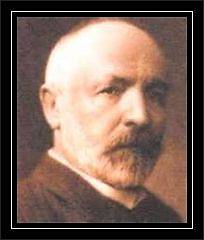
And everything would be fine, but suddenly another trouble struck again. Out of nowhere in this very theory of sets insurmountable contradictions began to appear, which are also described in great detail in Singh’s book. In the scientific community everyone immediately was alarmed and began to think about how to solve this problem. But it has rested as on the wall and in no way did not want to be solved. Everyone was somehow depressed, but then they yet cheered up again.
It was so happened because now David Hilbert himself got down to it, the great mathematician that first solved the very difficult Waring problem, which has a direct relationship to the FLT. 21 It is also curious that Hilbert repeated Euler's experiment apparently inspired by the FLT problem. It seems that at some point Euler began to have doubts that the FLT is generally provable and he assumed the equation a4+b4+c4=d4 also like Fermat’s equation an+bn=cn for n>2 in integers is unsolvable, but in the end it turned out that he was wrong.22
Pic. 28. David Hilbert
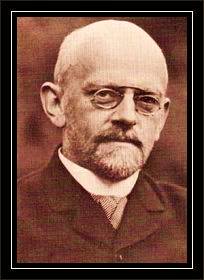
Following the example of Euler on the eve of the 20th century, Hilbert offered to the scientific community 23 problems, which according to his assumption, are unlikely to be solved in the foreseeable future. Nevertheless, Hilbert's colleagues coped with them rather quickly, while Euler’s hypothesis has held almost until the 21st century and was only refuted with the help of computers, what is also described in Singh’s book. So, the suspicion that the FLT was merely an assumption of its author has lost any reason.
Hilbert had not cope with overcoming contradictions in set theory and could not do it because this problem is not at all mathematical, but informational one, so computer scientists should solve it sooner or later and when this happened, they are surprisingly very easily (and absolutely true) found a solution just forbidding closed chains of links.23 It is clear Hilbert could not know about it then and decided that the most reliable barrier to contradictions can be provided with the help of axioms. But axioms cannot be created on empty place and must come out of something and this something is a number, but what it is, no one can explain this not then nor now.
A brilliant example of what can be created with axioms is given in the same book of Singh. The obvious incident with the lack of a clear formulation to the notion of a number can accidentally spoil any rainbow picture and something needs to be done with it. It gets especially unpleasant with the justification of the “complex numbers”. Perhaps this caused the appearance in the Singh’s book of Appendix 8 called “Axioms of arithmetic”, in which 5 previously known axioms relating to a count are not mentioned at all (otherwise the idea will not past), while those that define the basic properties of numbers are complemented and a new axiom appears so that it must exist the numbers n and k, such that n+k=0 and then everything will be in the openwork!
Of course, Singh himself would never have guessed this. It is clearly visible here the help of consultants who for some reason forgot to change the name of the application since these are no longer axioms of arithmetic because already nothing is left of it.24 The school arithmetic, which for a long time barely kept on the multiplication table and the proportions, is now completely drained. Instead it, now there is full swing mastering of the calculator and computer. If such “progress” continues further, then the transition to life on trees for our civilization will occur very quickly and naturally.
Against this background a truly outstanding scientific discovery was made in Wikipedia, which simply has no equal in terms of art and the scale of misinformation. For a long time, many people thought that there are only four actions of arithmetic, these are addition and subtraction, multiplication and division. But no! There are also exponentiation and … root extraction (???). The authors of the articles given us this "knowledge" through Wikipedia clearly blundered because extracting the root is the same exponentiation only not with the integer power, but with fractional one. No of course, they knew about it, but what they didn’t guess was that it was they who copied this arithmetic action at Euler himself from that very book about the wonder-algebra25.
The correct name of the sixth action of arithmetic is logarithm i.e. calculating the power index (x) for a given power number (y) and basis of a power (z) i.e. from y=zx follows x=logzy. As in the case with the name of the Singh’s book, this error is not at all accidental since no one really worked on logarithms as part of the arithmetic of integers. If this happens someday, then not earlier than in some five hundred years! But as for the action with power numbers, the situation here is not much better than with logarithms. If multiplication and dividing of power numbers as well as exponentiation a power number to a power, do not present any difficulties, but the addition of power numbers is still a dark forest even for professors.
The clarification in this matter begins with the FLT, which states that the sum of two power integer with the same power index greater than the second, cannot be an integer with the same power index. In this sense, this theorem is not at all any puzzle, but one of the basic propositions that unequivocally (!) regulates the addition of integer powers, therefore, it is of fundamental importance for science.26 The fact that the FLT has not yet been proven, indicates only the state of current science, which is falling apart right before our eyes. Science cannot even imagine that if the proof from Fermat himself came to us, it would have been long ago taught in secondary school.
Many people of course, will perceive it as a fairy tale, but only the completely blind ones may not notice that behind all this absurd and awkward history with the FLT, clearly and openly ears of the unholy stick so out, that he was enough to deprive human civilization of access to Fermat's works on arithmetic, so it immediately turned out to be completely disoriented. Instead of developing science they began being vigorously to destroy it and even with very good intentions. But a special zeal in people appears when they have the material stimulus.
Pic. 29. Andrew Beal
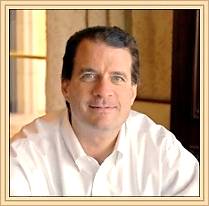
Texas entrepreneur Andrew Beal27 had proposed his conjecture, the proof of which allegedly could lead to a very simple proof of the FLT. Since for the solution of this problem it was proposed first $ 5 thousand, then $ 100 thousand, and from 2013 – a whole million, then naturally it appeared many willing people who began diligently this task to solve. However, in the conditions when arithmetic has long ceased to be the primary basic of all knowledge and still does not know, what is a number, everything turned upside down i.e. one amateur enthusiast was able to set on the ears the whole official science and so, that it had in fact already acknowledged the experience of Baron Munchhausen lifting himself up, taking himself by his collar, wherewith science did not even try at least to conceal its own insolvency (see pt. 4.5).
By working in the intense and tireless search for the FLT proof, it has never even occurred to anyone to search for Fermat’s manuscripts with layouts and calculations, without which he could not do28. However, again from Singh’s book we learn that such an idea came to Euler who asked his friend living in Lausanne (a city not far from Toulouse) to look for at least a little piece of paper with Fermat’s instructions to the FLT proof. But nothing was found, however, they were looking for what we do not really need! It was necessary to look for a cache!!!
Here is the new puzzle, which is not easier! What else kind of cache? … Oh yes! The fact is that only those Fermat's works remained, which he itself had already prepared for publication since otherwise they would hardly have been published. But all the working manuscripts for some reason has disappeared. It looks very strange and it is possible that they can still be kept in the cache, which Fermat has equipped to store the material evidence necessary for him to work as a senator and high-ranking judge. It was quite reasonable to keep calculations and proofs there, since Fermat’s scientific achievements could significantly damage his main work if they were made public before the establishment of the French Academy of Sciences.29
If we could somehow look into this cache, what will we see there? To begin with, let's try to find some simple tasks there. For example, the one that Fermat could offer today for secondary school students:
Divide the number xn−1 by the number x−1, or the number x2n−1 by
the number x±1, or the number x2n+1+1 by the number x+1.
It is obvious that students with the knowledge of solving such a task will be simply a head over the current students who are trained in the methods of determining the divisibility by only some small numbers. But if they else know a couple of the Fermat's theorems, they can easily solve also the more difficult problem:
Find two pairs of squares, each of which adds up to the same number
in the seventh power, for example,
2217=1511140542+539693052=82736654 2+1374874152
Compared to the previous task where calculations are not needed at all, in solving this task, even with a computer calculator you have to tinker with half an hour to achieve a result, while apart from understanding the essence of the problem solution, you need to show a fair amount of patience, perseverance and attention. And who understands the essence of the solution, will be able to find other solutions to this problem.30
Of course, such tasks can cause a real shock to today's students and especially to their parents who will even demand not to “dry the brains” of children. But if children's brains are not filled with elementary knowledge and not trained by solving the corresponding tasks, they will wither by themselves. This is proven by the statistics of the steady decline in today's students IQ compared with their predecessors. Really in fact, the above tasks are only a warm-up for the young generation, but children could produce a real furor for mathematicians offering them some simple Fermat's theorems about magic numbers (see Pt. 4.4.). And this is else a big question, could these theorems being solved by today's professors or will they again need some three hundred years and the story with the FLT will repeat? However, the chances of them in contrast to previous times, are very high because magic numbers are a direct consequence of the same “truly amazing” proof of the FLT, about the existence of which we have direct written evidence from Fermat himself.
Reconstruction of this proof was briefly published as early as 2008 [30], but the unholy was on the alert and presented this event so, that modern science disoriented by the false notion that the problem was solved long ago, has not paid on this any attention. However, all secret sooner or later becomes clear and the decisive word in spite of everything, still remains for science. The question now is only when this science will finally awaken and comes to his senses. The longer it will be in a blissful state of oblivion, the sooner the terrible events will come that already now beginning to shake our world like never before.
In order for science to win a well-deserved victory over the gloom of ignorance and mass disinformation, which are triumphant today, it needs very little. For the beginning it is necessary simply to search for the very cache, in which such secrets of science are hidden, that have not lost their relevance for three and a half centuries.31 Even if the papers found in the cache will be unreadable, the very fact of the existence of the cache will be evidence that science is moving in the right direction and the results will not be long in coming.
We already did something in this direction when we restored the FLT recording in the margins of Diophantus 'Arithmetic' (see pic. 5 and the translation in the end of Pt. 1). Now, by all means, we need to get a complete picture of the whole sequence of events that led to the discovery of the FLT in its final wording published in 1670. It will not be easily at all, but since we got involved in this story, now we have nowhere to retreat and we will strain all our forces to achieve the aim. Fortunately, for this we have all the opportunities granted to us from above to get the coveted access to the cache of the Toulousean senator.
3. What is a Number?
3.1. Definition the Notion of Number
The question about the essence the notion of number at all times was for scientists the thing-in-itself. They of course, understood that they could not distinctly answer this question as well as they could not admit in this since this would have a bad effect on maintaining the prestige of science. What is the problem here? The fact is that in all cases a number must be obtained from other numbers, otherwise it cannot be perceived as a number. To understand for example, the number 365, you need to add three hundred with six tens and five units. It follows that the notion of a number does not decompose into components that are qualitatively different from it and in such a way as usual for science i.e. through analysis, it is not possible to penetrate the secret of its essence.
Scientists having a question about the nature of numbers immediately ran into this problem and came to the conclusion that a general definition the notion of number simply does not exist. But not a such was Pierre Fermat who approached this problem from other side. He asked: “Where does the notion of number come from?” And came to the conclusion that his predecessors were the notions “more”, “less” and “equal” as the comparisons’ results of some properties inherent to different objects [30].
If different objects are compared in some property with the same object then such a notion as a measurement appears, so perhaps is the essence of a number possible revealed through a measurement? However, it is not so. In relation to the measurement, the number is primary i.e. if there are no numbers, there can be no also measurements. Understanding the essence of the number becomes possible only after establishing the number is inextricably connect with the notion of “function”.
But this notion is not difficult to determine:
A function is a given sequence of actions with its arguments.
In turn, actions cannot exist on their own i.e. in the composition of the function in addition to them must include the components, with which these actions are performed. These components are called function arguments. From here follows a general definition the notion of number:
Number is an objective reality existing as a countable quantity, which consists of function arguments and actions between them.
For example, a+b+c=d where a, b, c are arguments, d is a countable quantity or the number value.32
To understand what a gap separates Pierre Fermat from the rest of the science’s world, it is enough to compare this simple definition with the understanding existing in today's science [13, 29]. But understanding clearly presenting in the scientific works of Fermat, allowed him still in those distant times to achieve results that for other scientists were either fraught with extreme difficulties or even unattainable. It may be given also the broader definition the notion of number, namely:
A number is a kind of data represented as a function.
This extended definition the notion of number goes beyond frameworks mathematics; therefore, it can be called as general one and the previous definition as mathematical. In this second definition, it is necessary to clarify the essence the notion of “data”, however, for modern science this question is no less difficult than the question about the essence of the notion a number.33
From the general definition the notion of number follows the truth of the famous Pythagoras' statement that everything existing can be reflected as a number. Indeed, if a number is a special kind of information, this statement very bold at that time, was not only justified, but also confirmed by the modern practice of its use on computers where three well-known methods of representing data are implemented: numerical (or digitized), symbolic (or textual) and analog (images, sound, and video). All three methods exist simultaneously.
Pic. 30. Pythagoras
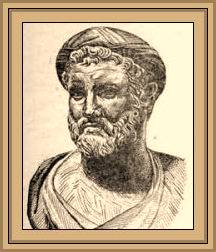
A strikingly bold statement even for our time that thinking is an unconscious process of computations, have been expressed in the 17th century by Gottfried Leibniz. Here, thinking is obviously understood as the process of data processing, which in all cases can be represented as numbers. Then it is clear how computations appear, but understanding of the essence of this process in modern science is so far lacking.34



